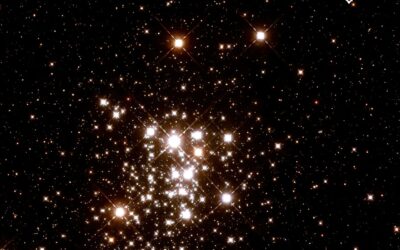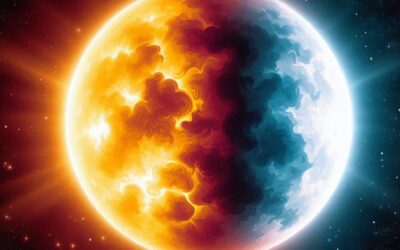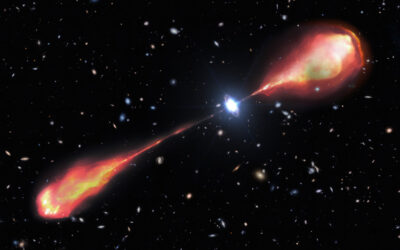Astronomy has long been a field that grapples with extremely large numbers and concepts. Some of the universe’s most fascinating features are its largest structures, which defy comprehension both in terms of their mass and their vast expanse across space. Among these structures, a new discovery has emerged that is set to redefine our understanding of the cosmos. This discovery involves a colossal superstructure named Quipu, which is currently the largest known structure in the universe. Not only does Quipu challenge our conceptual boundaries with its extraordinary mass, but it also pushes the limits of our cosmological models and measurement techniques.
Quipu, which is more than 400 megaparsecs long (over 1.3 billion light-years), is composed of galaxy clusters and superclusters. These superstructures—so massive they defy traditional understanding—are thought to account for a significant portion of the universe’s matter and energy. Quipu alone contains 200 quadrillion solar masses, a number so large it is almost unimaginable. This mass is not only substantial in itself, but the structure’s size, spanning billions of light-years, can have a profound impact on its surroundings. Researchers are keen to understand how these massive formations distort our perception of the universe, as their influence is evident in several key areas of astrophysical research.
The discovery of Quipu and its companions is the result of research conducted by Hans Bohringer and his team at the Max Planck Institute. Their findings, published in the journal Astronomy and Astrophysics under the title “Unveiling the largest structures in the nearby universe: Discovery of the Quipu superstructure,” reveal the existence of not just Quipu, but four other superstructures within a distance range of 130 to 250 megaparsecs (Mpc). These discoveries are part of the Cosmic Large-Scale Structure in X-rays (CLASSIX) Cluster Survey, which uses X-ray galaxy clusters to study superstructures across the cosmos.
X-ray galaxy clusters are crucial to the identification of superstructures. They are dense regions that emit X-rays due to the hot gas contained within them. This radiation serves as a signal, allowing researchers to map out the mass of these structures. By studying these emissions, astronomers can trace the mass distribution across the largest parts of the universe, identifying clusters of galaxies that are interconnected and spread across vast distances.
The superstructures discovered by Bohringer’s team are not just of academic interest; they hold significant implications for the accuracy of our cosmological measurements and models. The mass and gravitational influence of these superstructures leave an imprint on the Cosmic Microwave Background (CMB), a key piece of evidence supporting the Big Bang Theory. The CMB is a faint radiation left over from the Big Bang, and its properties closely match theoretical predictions. However, the gravitational influence of superstructures like Quipu can distort the CMB, causing fluctuations known as the Integrated Sachs-Wolfe (ISW) effect. These fluctuations are background noise that introduces errors into the measurement of the CMB and, by extension, our understanding of the early universe. This means that large-scale structures can skew our view of the universe’s infancy, making it harder to accurately measure fundamental cosmological parameters.
Another critical area affected by these superstructures is the Hubble constant, which defines the rate at which the universe is expanding. While galaxies are moving apart due to the expansion of space, they also exhibit local velocities, known as peculiar velocities or streaming motions. These velocities arise from the gravitational influence of superstructures like Quipu, which can distort measurements of the Hubble constant by influencing the motion of galaxies. Understanding the effect of these large-scale structures on peculiar velocities is essential for improving the accuracy of our measurement of the universe’s expansion rate.
Superstructures also have an impact on the way we observe and interpret the sky. Their enormous mass can warp space-time, resulting in a phenomenon known as gravitational lensing. Gravitational lensing occurs when light from distant galaxies is bent around a massive object, distorting our view of those galaxies and potentially leading to errors in our measurements of distance and brightness. The influence of superstructures like Quipu on gravitational lensing complicates our ability to make precise observations of distant cosmic objects.
Despite their size and influence, these superstructures are not permanent features of the universe. Over time, they are expected to break up into smaller, collapsing units as part of the ongoing evolution of the cosmos. However, for the present, they represent unique physical entities with distinctive properties. As such, they are deserving of focused attention in the field of cosmology. Researchers are now beginning to study how these superstructures influence the evolution of galaxies and the broader universe. Some studies suggest that the environment within these superstructures may play a role in shaping the properties and evolution of galaxies, and understanding these effects could help improve our overall models of cosmic growth.
One of the more intriguing aspects of the Quipu superstructure and its companions is the question of how these enormous structures fit into our broader cosmological models. The Lambda-CDM model—the standard model of cosmology—predicts that structures like Quipu should exist, but it is still a challenge to account for the exact nature of these superstructures within that framework. While simulations based on Lambda-CDM can produce structures of similar properties, the discovery of Quipu challenges some of the assumptions underlying these models. The sheer scale and mass of Quipu raise questions about how our models of cosmological evolution can be refined to better account for these giant structures and their interactions with the universe at large.
The naming of Quipu itself offers a glimpse into the structure’s unique characteristics. Quipu is an ancient Incan term for a system of knotted cords used to record information, with the knots representing data based on their color, position, and number. The name was chosen because Quipu, the superstructure, shares the characteristic of being a long, complex filament with smaller side filaments, creating an image of a cosmic “cord” that holds galaxies and galaxy clusters in an intricate web. This metaphor underscores the interconnectedness of the galaxies within the structure and hints at the underlying order of the universe at large scales.
The discovery of Quipu and its neighboring superstructures has the potential to revolutionize our understanding of the universe. These structures, which hold vast amounts of matter, play a central role in shaping the cosmic landscape. Their gravitational pull influences galaxies, distorts our observations, and introduces errors into some of the most important measurements in cosmology. If we are to gain a true understanding of the universe, it will be essential to incorporate the effects of these superstructures into our models and measurements.
As Bohringer and his team note in their paper, further research is needed to better understand the role of superstructures in shaping the evolution of galaxies. Such studies could include exploring how the unique environments within these superstructures affect the formation and development of galaxies over time. The discovery of Quipu is just the beginning, and there is much more to learn about how these enormous structures contribute to the cosmic web.
More information: Hans Boehringer et al, Unveiling the largest structures in the nearby Universe: Discovery of the Quipu superstructure, arXiv (2025). DOI: 10.48550/arxiv.2501.19236






